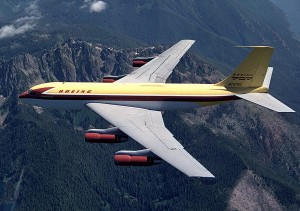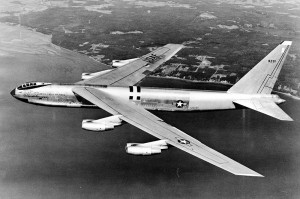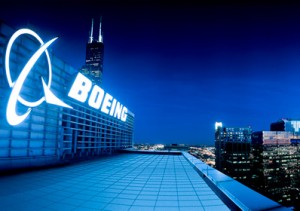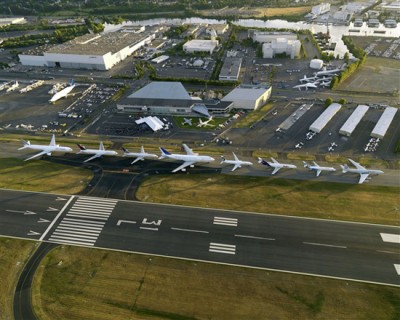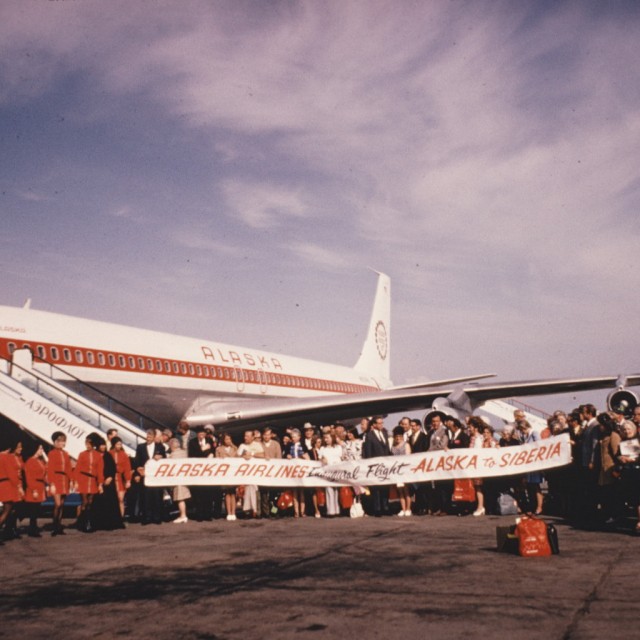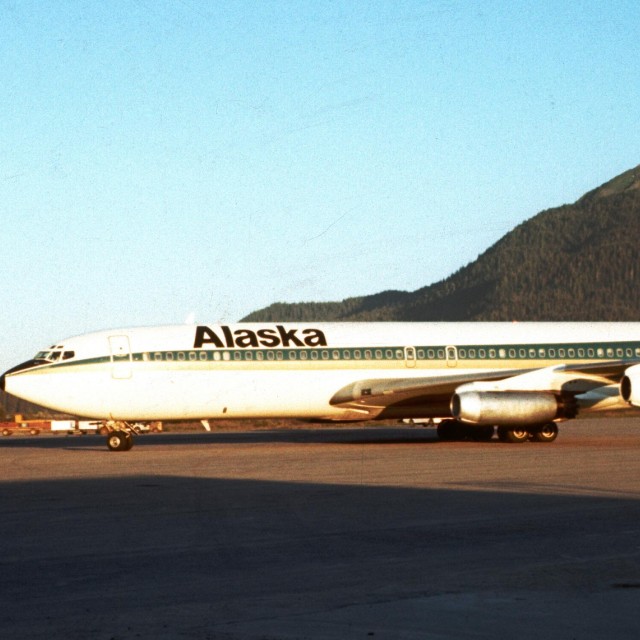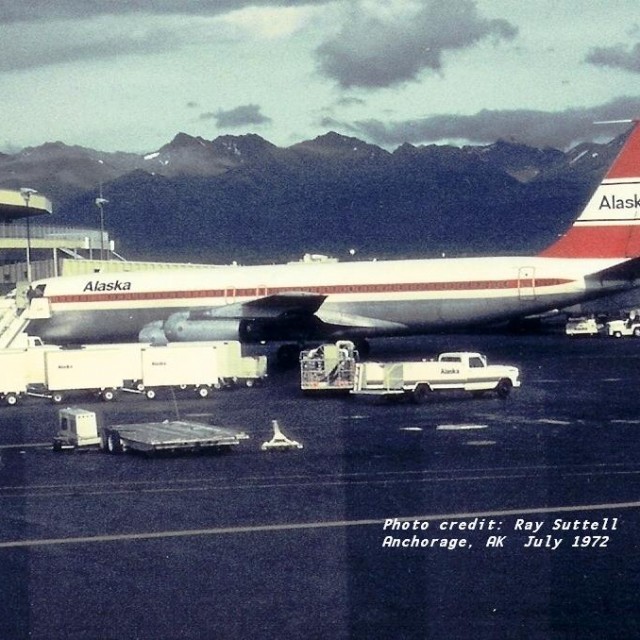This is the second part to my interview with Boeing Historian Michael Lombardi. Here is the continuation of our exclusive interview:
AirlineReporter (AR): What do you think the best decision Boeing has made?
Michael Lombardi (ML): I think the best decision was building the Dash 80 (the first Boeing 707), which was a huge risk. People like Bill Allen are such heroes of aviation because of this. They looked down the road and said ’œthe future will be jets.’ We built the B-47 and B-52 and the military has gone in this direction and commercial aviation cannot be too far behind, so let’s give them a little kick in the rear and get them going in that direction.
Boeing took company money and sunk it into building this prototype airplane (the dash 80), and if it had failed, the company would be done. That is why they think of it as a big gamble because financially they put everything into this and so now it was, now we got to make it work and everybody in the company really became focused on, ’œokay, this is the direction we are going, let’s make it happen’.
You have to remember that Boeing at this point is a military company, period. There is no commercial work at all. We are a military company. We are the sole supplier of bombers and missiles to the strategic air command. As a matter of fact, people used to think that SAC (Strategic Air Command) used to mean ’œSeattle Air Command’, because Boeing supplied B-52s, B-47s, Minuteman Missiles, KC97 Tankers, all of these things were invented and given to SAC.
AR: How did Boeing transition from military to commercial?
ML: Boeing told one engineer ’œokay, you go to Europe and sell our airplanes.’ Just one guy, and send him to Europe and tell him ’œgo’, and he’s like ’œI’m designing airplanes, what I am doing?’
There was a lot of learning that had to be done on a completely different business. You have a marketing department that all of a sudden had ’œoh, we have to deal with the public and with the airline customers, how do we do that?’
AR: Marketing must have had quite the challenge.
ML: Boeing had this great advertising campaign where they went right to the public, because they can’t get the airlines interested. So this campaign showed all of these people flying, taking away the fear out of it. Showing children sitting with their folks on the flights and focusing on how smooth a flight on a Boeing aircraft was.
With the older props, people would just wrap themselves in a blanket, get a pillow and wrap it around their heads and just endured the flight because of the vibration and the noise. There was a lot of romance, but there was also a lot to endure. Boeing said, we are going to get rid of all of that, and it’s going to be quiet and it’s going to be smooth, and it’s going to be fast and this is what you wanted people to say, ’œYeah, that’s what we want’.
Then you have Tex Johnson who did the barrel roll, doing his part to get people feeling that jets were safe’¦ that was the whole idea. Before that the British had come out with the Comet and it had a few problems. Because of the comets problems, coming apart at altitude, the public view of jets was that they were just not safe.
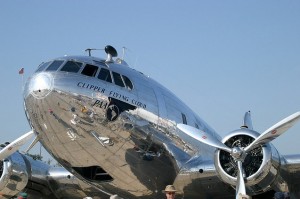
Boeing 307 Stratoliner gave Boeing much needed experience in cabin pressurization. Photo by Sam Wiltzius.
AR: The Comet had to make it hard to get people to trust jets were safe.
ML: The Comet’s problem is it had metal fatigue, the fuselage came apart altitude. This was because of the pressurization, the cycling of fuselage, Boeing had built the first world’s first pressure airplane back in the late 1930’s with the Stratoliner, so of course Boeing had been working on high altitude flight and pressurization for a couple of decades by the time the dash 80 came out.
Whereas de Havilland pretty much built trainer planes and the famous Mosquito during the war and they really didn’t have that much expertise in building big planes. They had gone too far too fast and they didn’t see this coming. The guys from Boeing had been doing their homework for years and developing all of this technology, so they understood all of these issues of cycling of fuselage.
As you remember, we had the Model 307 and the B-29 and the B-52. All of these pressurized planes had come out already.
AR: So how did the Boeing 707 come about?
ML: After the war, Bill Allen, who was running at the company at the time, said we need to diversify. We are too much into one direction with the military. We need to get into commercial, we need to get into space, missile and all of this, so he told his engineering department to start doing all these different things and part of the response was to take the model numbering system and say ’œokay, ’œyou guys working on military aircraft, here’s three and four hundred model numbers keep running with those. You guys over here working on turbine engines take these five hundreds and you guys working on missiles take six hundreds. And all of the work on new transport takes seven hundreds’.
Of course the first transport to come out was the 707 and they went with the 707 because it was catchy and it stuck. The bottom line is that everyone at Boeing focused on this and made it worked. In a few years Boeing turned from being a military company to being a balanced company, to having this commercial airplane business that we are still enjoying the success of today.
AR: What do you think was the biggest mistake Boeing made (or the greatest opportunity to learn)?
ML: I think the biggest mistake was when we were building the Boeing 247 and Douglas came out with the DC2 and DC3. We had a customer, TWA headed up by Jack Frye that came to Boeing and said ’œI want 247’s.’ Boeing had our corporate airline, United Air Lines, and they got first dibs. That meant the first 70 airplanes were promised to United Air Lines and when Jack Frye was desperate to have this new airplane for his new airline, he went to Douglas instead. Douglas then came out with the DC3, and the DC3 ended up putting Boeing out of the airliner business until the 707. Their big mistake, was not responding to that customer and they learned from that.
AR: Do you ever go on Wikipedia to make sure they have correct Boeing information?
ML: Every now and then I do. I usually very surprised how knowledgeable people are and there are some smart people out there and aviation enthusiast are passionate’¦ they’re smart, they know how to look stuff up and figure out those little details and the stuff is good. Sometimes I’ll read something and think, ’œWow, where did that come from?’
AR: Alright, my last question will be a doozie: What is the greatest misconception you think people have about Boeing?
ML: One of the things that always bugged me was the term ’œhigh tech company’ we are lead to think of high tech companies as being computer companies or software companies. But there are no other companies that are more high tech than aerospace companies like Boeing.
We are high tech. We are the people that invented computers, the software, and all of this stuff came out of the aerospace industry. All the high tech industries are all an off shoot of the aerospace industries, so I think that has always been a misconception.
When you think of who’s high tech and who’s pushing the boundaries it really is the aerospace industry and Boeing. The internet is cool, and having computers and your little 4G phone is great, but it’s not worth a dang thing without those satellites and the technology that we developed to make that happen, with the GPS all that business. All stuff that was created by this industry and that is one of the things that people need to know.
Inside The Boeing Company Archives
PART 1 | PART 2 | PART 3a | PART 3b | ALL PHOTOS | ALL STORIES
